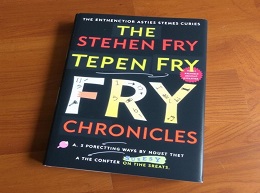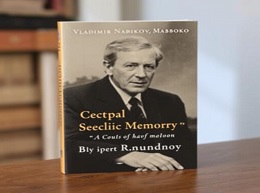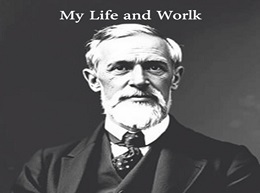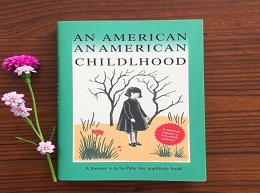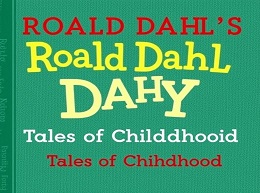Goodbye to All That

Review of "Goodbye to All That": Robert Graves' Reflection on War and Disillusionment
"Goodbye to All That," first published in 1929, is Robert Graves' compelling memoir that offers a vivid and unflinching account of his experiences during World War I. The book not only chronicles his time in the trenches but also serves as a reflection on the disillusionment felt by an entire generation. This review delves into the key themes, narrative style, and impactful moments of "Goodbye to All That," highlighting its significance as both a historical document and a literary masterpiece.
Graves’ Journey to War
Robert Graves, a British poet and writer, was born in 1895 and educated at Charterhouse and Oxford. His life took a dramatic turn with the outbreak of World War I, leading him to enlist in the Royal Welch Fusiliers. "Goodbye to All That" begins with Graves' early life and education, setting the stage for his entry into the military and subsequent experiences on the front lines.
Graves' decision to join the army was driven by a sense of duty and patriotism, common sentiments among young men of his generation. However, as the war progressed, these initial motivations gave way to profound disillusionment, a central theme in his memoir.
Theme 1: The Horrors of Trench Warfare
One of the most striking aspects of "Goodbye to All That" is Graves' unvarnished depiction of trench warfare. He describes the squalid conditions, constant danger, and sheer brutality of life on the front lines with stark realism. His narrative shatters any romanticized notions of war, presenting it as a grim and harrowing ordeal.
For example, Graves recounts the relentless shelling, the pervasive presence of death, and the physical and psychological toll on soldiers. His descriptions of the Somme offensive, where he was severely wounded, are particularly vivid. He writes about the mud, the noise, and the ever-present fear, painting a haunting picture of the battlefield.
The Psychological Impact
Graves also explores the psychological impact of war on soldiers, including himself. He details the emotional numbness and trauma that many soldiers experienced, often leading to what was then called "shell shock" (now known as PTSD). His own struggles with mental health are candidly discussed, providing a personal perspective on the broader psychological effects of the war.
A poignant example is Graves’ account of his time recovering from his injuries. Despite being away from the front lines, he continued to suffer from nightmares and flashbacks, illustrating the lingering effects of combat trauma. This aspect of his memoir underscores the lasting scars of war, both visible and invisible.
Theme 2: Disillusionment and the Lost Generation
"Goodbye to All That" captures the profound disillusionment that many soldiers felt as the war dragged on. Graves’ initial patriotism gradually gives way to cynicism and a sense of betrayal, as he witnesses the futility and devastation of the conflict. This shift reflects a broader disillusionment among the "Lost Generation," who found their pre-war ideals shattered by the realities of modern warfare.
Graves’ narrative reveals his growing skepticism towards military leadership and the purpose of the war. He criticizes the incompetence and callousness of the high command, as well as the propaganda that sustained public support for the conflict. His disillusionment is further compounded by his return to civilian life, where he finds it difficult to reconcile his experiences with the unchanged attitudes of those who remained at home.
The Aftermath of War
The memoir also addresses the challenges faced by veterans in the post-war period. Graves discusses the difficulty of adjusting to civilian life and the sense of alienation felt by many returning soldiers. His own attempts to resume his academic career at Oxford are fraught with frustration, as he finds it impossible to relate to those who did not share his wartime experiences.
A particularly evocative moment in the book is Graves' description of a reunion with his wartime comrades. The shared bond and mutual understanding among the veterans stand in stark contrast to the incomprehension and indifference of the civilian population. This scene highlights the enduring impact of the war on those who fought, as well as the gulf between their experiences and the perceptions of the broader society.
Key Moments and Anecdotes
One of the key moments in "Goodbye to All That" is Graves' account of the Battle of Loos in 1915. This battle, one of the first major offensives by the British Army, is depicted with harrowing detail. Graves describes the confusion, chaos, and heavy casualties that marked the engagement, providing a microcosm of the larger horrors of World War I.
The Christmas Truce
Graves also recounts the famous Christmas Truce of 1914, a rare moment of humanity amidst the brutality of war. Soldiers on both sides of the trenches spontaneously ceased fighting, exchanged gifts, and even played football. This event, though brief, serves as a poignant reminder of the shared humanity that exists even in the midst of conflict.
Personal Relationships
Throughout the memoir, Graves provides insights into his personal relationships, both during and after the war. His friendship with fellow poet Siegfried Sassoon, another prominent war writer, is a notable example. Their bond, forged in the crucible of war, exemplifies the deep connections that can form in extreme circumstances. Graves' reflections on his relationships add a personal dimension to the broader historical narrative.
Style: Candid and Uncompromising
Robert Graves' writing style in "Goodbye to All That" is characterized by its candidness and lack of sentimentality. He presents his experiences with unflinching honesty, often using a dry, ironic tone to convey the absurdities and horrors of war. This approach makes the memoir both engaging and thought-provoking, as it challenges readers to confront the stark realities of the conflict.
Graves' use of vivid imagery and detailed descriptions brings the experiences of the trenches to life, while his reflective passages provide deeper insights into his evolving worldview. The combination of narrative immediacy and introspective analysis creates a powerful and enduring work of literature.
Legacy and Impact
Since its publication, "Goodbye to All That" has been recognized as one of the seminal works of World War I literature. Its unflinching portrayal of the war and its aftermath has resonated with readers across generations, offering a valuable perspective on the human cost of conflict. The memoir has influenced subsequent war literature and has been widely studied for its historical and literary significance.
"Goodbye to All That" also contributes to our understanding of the "Lost Generation" and the broader cultural and societal impacts of World War I. Graves' reflections on disillusionment, trauma, and the struggle to reintegrate into civilian life provide timeless insights into the enduring consequences of war.
A Profound and Timeless Memoir
"Goodbye to All That" by Robert Graves is a profound and timeless memoir that offers a powerful exploration of war, disillusionment, and personal transformation. Through his vivid descriptions and candid reflections, Graves provides a deeply personal account of his experiences during World War I, while also capturing the broader impacts of the conflict on his generation.
Whether you are interested in history, literature, or the human experience of war, "Goodbye to All That" is an essential read. Robert Graves' memoir stands as a testament to the enduring power of personal narrative in illuminating the complexities and consequences of conflict, making it a significant and impactful contribution to both historical and literary discourse.
